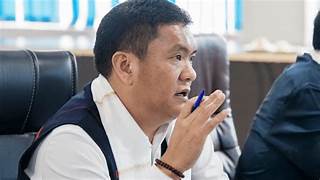
66 Border Villages Identified Under Vibrant Villages Programme: Arunachal CM

 :
| Updated On: 15-Jul-2025 @ 3:46 pm
:
| Updated On: 15-Jul-2025 @ 3:46 pmSHARE
Arunachal Pradesh Chief Minister Pema Khandu on Monday announced that the state government has identified 66 villages along the Indo-Myanmar border for development under the Centre’s Vibrant Villages Programme (VVP). This initiative is aimed at ensuring “last-mile development” and uplifting border communities by addressing critical gaps in infrastructure and public services.
In a social media post, Khandu detailed that the identified villages fall across three districts: Tirap, Changlang, and Longding. Of the total 66 villages, Changlang accounts for the highest number with 42 villages, followed by Longding with 13, and Tirap with 11. The VVP will primarily focus on enhancing road connectivity, expanding telecom access, ensuring electricity supply, generating livelihoods, and promoting skill development. These efforts aim to provide inclusive growth and stop the migration from remote border areas by improving basic amenities and opportunities.
Census 2011 data indicates that Wakka village in Longding is the most populous among the selected villages, with over 2,000 residents. Gandhigram in Changlang follows with 1,754 people, and Khanu in Longding has 1,629 residents. On the other hand, the least populated villages include Old Potuk (41 residents), Gaherigram (57), and Lungtung (71), all situated in Changlang district.
The 11 villages identified in Tirap district are: Old Bunting, Sanliam, Raho, Lazu, Noglo, Upper Chinhan, Lower Chinhan, Tutnyu, Lonyen, New Kothung, and Nogna. In Longding district, the 13 selected villages include: Wakka, Khanu, Chongkhow, Chop, Khogla, Kampong, Jagan, Khasa, Konnu, Konsa, Lower Pongchau, Pongchau, Pongchau HQ, and Votnu.
Changlang’s 42 villages are spread across seven administrative blocks — Khagam-Miao, Kantang, Khimiyong, Manmao, Nampong, Yatdam, and Vijoynagar — highlighting the wide geographic distribution of the programme’s outreach in the district.
Officials noted that the programme has a broader objective to fill critical gaps in areas such as livelihood generation, tourism, housing, renewable energy, and connectivity infrastructure (roads and telecom). These developments are strategically important not only to uplift remote communities but also to retain population in sensitive and strategic border areas by making living conditions sustainable and secure.
This current initiative is part of a phased effort. In the first phase, which was launched on February 15, 2023, the Union Government had approved the development of 455 villages located along the Indo-Bhutan and Indo-Tibet borders. Notably, among these, 135 villages were lacking any road connectivity — a major barrier to development, access to services, and economic growth.
By bringing basic infrastructure and developmental focus to remote and often-neglected villages, the Vibrant Villages Programme seeks to integrate them into the national mainstream while also enhancing border security through sustained habitation and development.